Chengdu Tiantai Mountain Scenic Area is located at No. 55, Tianshui Road, Sanjiao Community, Tiantai Mountain Town, Qionglai City, Chengdu, Sichuan Province. It is a peripheral protected area of the Sichuan Giant Panda Sanctuary, a World Natural Heritage site. It is also a national forest park, a national scenic spot, and a national 5A-level tourist attraction. The total area of the scenic area is 192 square kilometers, with the main peak Yuxiao Peak at an altitude of 1812 meters. The scenic area has distinct characteristics, being a rare box-shaped synclinal mountain in China with rich Danxia landform changes. The mountain body is U-shaped, and the terrain forms three levels of terraces from low to high. It has a subtropical monsoon climate, with no extreme heat in summer, no severe cold in winter, mild climate, and abundant rainfall. There are three main rivers in the area: Jinlong River, Wenjing River, and Baimo River. The area is rich in biological species, with 2573 species of vascular plants belonging to 876 genera and 182 families, and more than 50 species of national rare and protected animals.
History and Culture
In ancient times, Tiantai Mountain was a place where the ancient "Qiong" people lived and multiplied. During the Kaiming period of Ba and Shu, Bie Ling, the king of the ancient Shu State, "climbed high to worship heaven" here. In the Han Dynasty, Taoists chiseled caves and built altars to worship gods here. During the Jin, Southern and Northern Dynasties, Buddhist monks such as "Fotu Cheng" and "Pudashaye" traveled here and founded Tiantai Buddhist Temple. During the Sui and Tang Dynasties, Yuan Tiangang, the county magistrate of Huojing in the early Tang Dynasty, respected Taoism and was appreciated by Emperor Xuanzong of Tang. Tiantai Mountain was dominated by Taoism, and later Buddhism flourished and took a leading position. During the Northern Song Dynasty, Confucianism, Buddhism, and Taoism "merged", with 108 Taoist temples, Buddhist temples, and official houses. A "Monk Street" was also built, forming a huge religious mountain city. Due to conflicts among the three religions, the local government set up a "Monk Yamen" in the temple complex. At the end of the Song Dynasty and the Yuan Dynasty, religion in Tiantai Mountain gradually declined. At the end of the Ming Dynasty, an army of Zhang Xianzhong massacred all the monks in the mountain, and the temples and palaces were completely destroyed. In the Qing Dynasty, Buddhists and Taoists tried to restore, but on a much smaller scale than before. During the Republic of China, wars and banditry were rampant, and pilgrimages almost stopped. During the "Cultural Revolution", religious culture was greatly damaged. After the reform and opening up, tourism has become increasingly prosperous, some temples have been restored, and the "Monk Yamen" official house landscape has also been repaired.
Main Attractions
Waterfall Rainbow Scenic Area
There are attractions such as the Mountain Gate, Changhong Waterfall, Xiangshuitan Waterfall (known as the first waterfall in western Sichuan), Shenfeng Cave (a Danxia wonder), and the Ming Dynasty Guanyin Bridge. The Mountain Gate is 50 meters high, with the characters "Tiantai Mountain" inscribed by Mr. He Yinghui. It is built with local red sandstone strips and has a unique shape. Changhong Waterfall falls like a silver chain, and a rainbow can be seen across the valley when the sun shines obliquely; Xiangshuitan Waterfall has a large water flow, falling in 8 levels, with a deafening roar.



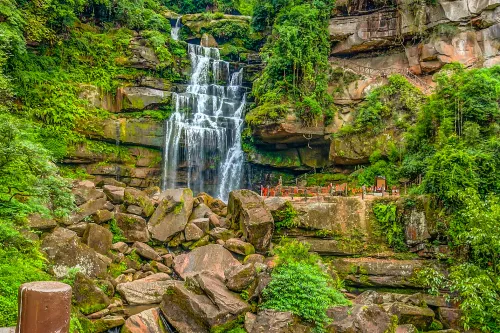
Yatan Wengu Scenic Area
It ranges from Denglean to Zhengtai Mountain, with main attractions including Denglean, Yinding Peak, Tianfeng Gorge (One-Line-Sky), Daoxue Stone, Xiaomofang, Zuishi Forest, Monk Yamen, Huashi Forest, Huashi Sea, Sandao Bay, Xiaojiuzhai, and camellias. The Tang Dynasty pilgrim road is located in this area, covered with moss, and there is a Tang Dynasty giant Buddha standing by the road.
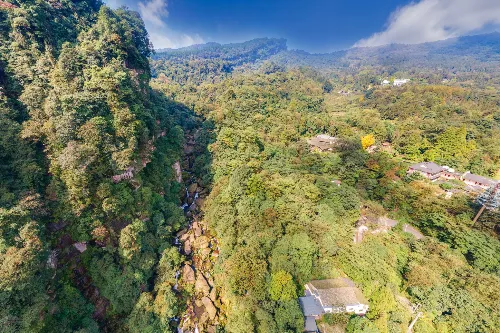
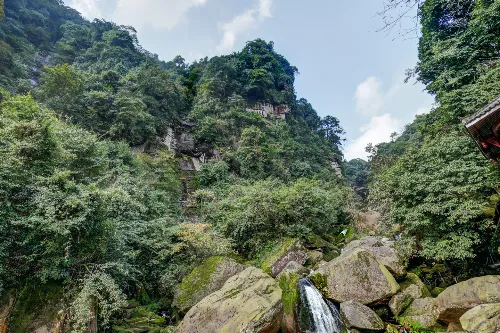
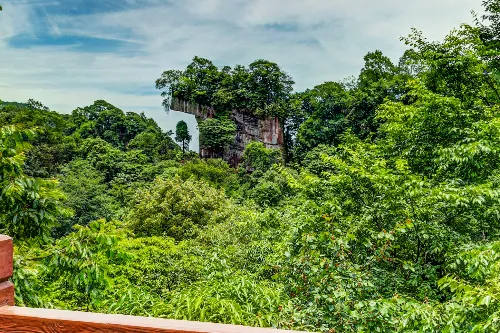
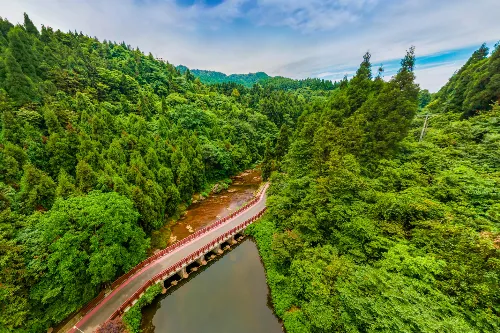
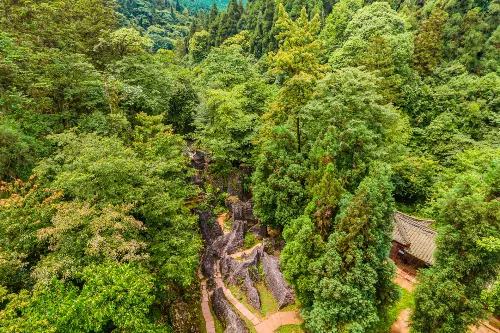
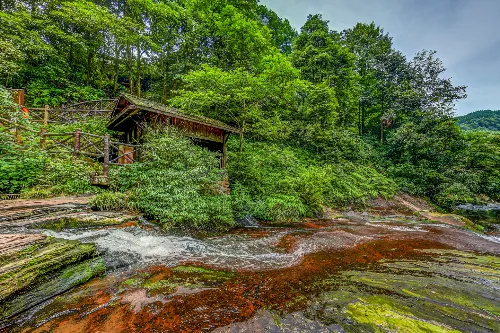
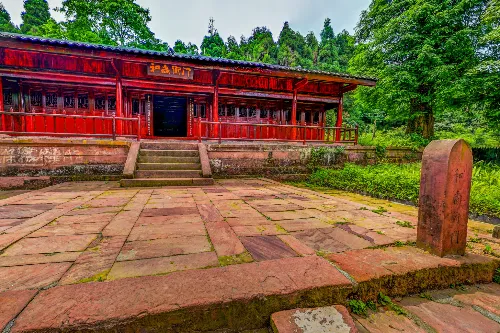
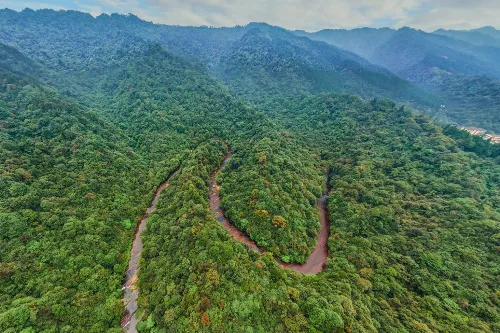
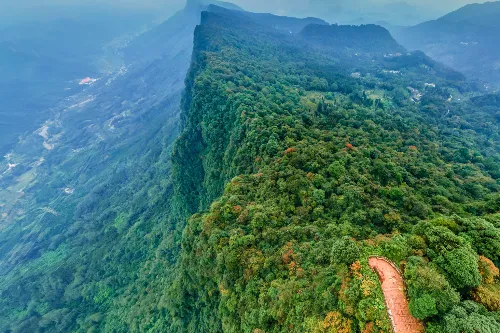

Yingguang Haoyue Scenic Area
It ranges from Zhengtai Mountain to Yuxiao Peak, with main attractions including Leiyin Temple, 18-Li Vanilla Gorge (a valley for playing in water in the mountains), Xiushui Sanyun, Qintai Stone, Liuyue Beach, Vanilla Diexi, Yuedong Feishui, Panlong Waterfall, Yuxiao Peak, and Monk's Tomb.
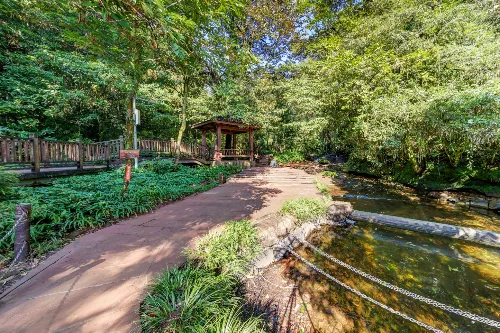
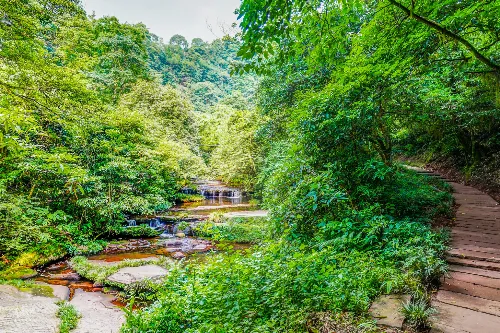
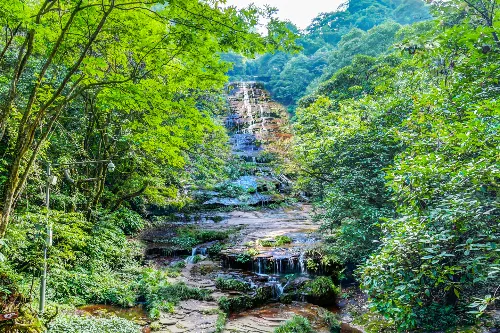

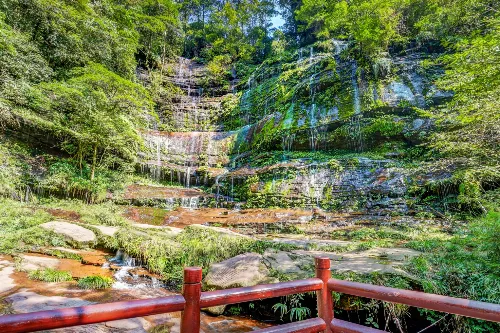
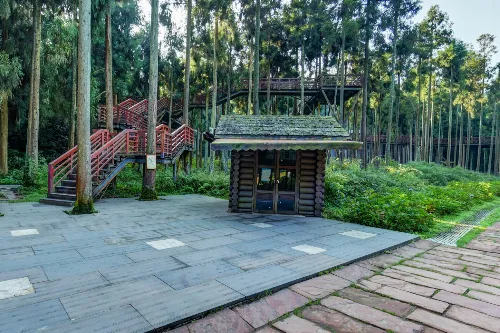
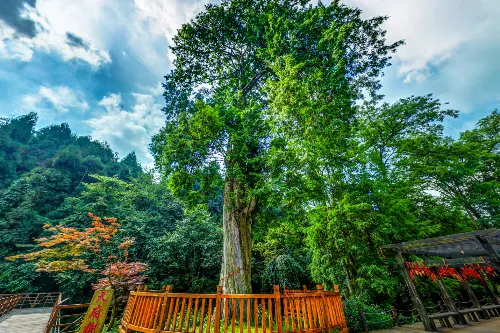
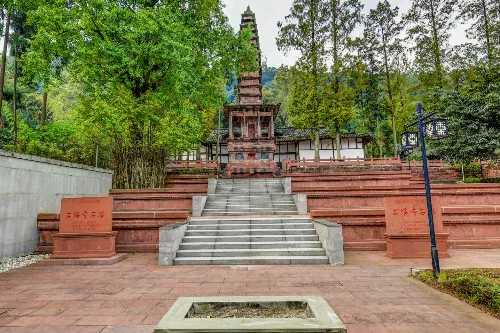
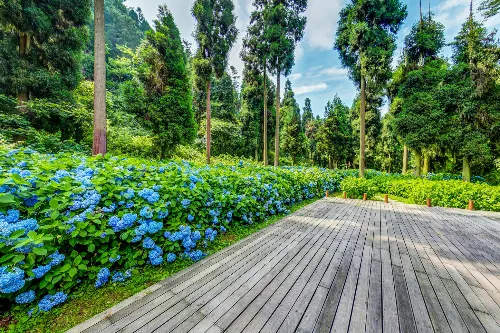
Tour Route
Tourist Center → Xiaojiawan → Denglean: After checking in at the mountain gate stone stele, follow the stone road and pass through Changhong Waterfall, Xiangshuitan Waterfall, Tree-Hugging Stone, and Zushi Bridge in sequence, and finally reach Denglean; Denglean → Xiaomofang: pass by the Tang Dynasty giant Buddha; Xiaomofang → Zhengtai Mountain: pass by Huashi Sea, Huashi Forest, Monk Yamen, Ten-Li Shade, and Sandao Bay Camellia Corridor; Zhengtai Mountain Area → Panlong Waterfall: pass by Leiyin Temple, Thousand-Year-Old Taxus Chinensis, Cunninghamia Lanceolata Forest Skywalk, Butterfly Beach, Bailongdu, and Xiushui Sanyun. The total distance is about 15km (one-way).
Tour Suggestions
- Choose a suitable tour route according to your physical strength and time to avoid overexertion.
- You can bring an extra set of clothes for summer trips to change after playing in the water.
- If you want to watch fireflies, you can go to the designated area on summer nights. Please keep quiet and do not use strong light.
- Wear comfortable sports shoes or hiking shoes for easy walking in the scenic area.
Notes
- Fireworks and fire are strictly prohibited in the scenic area. Do not smoke, do not bring inflammable and explosive items into the scenic area, and do not bring pets into the scenic area.
- Most of the tourist trails are water - passing roads, which are prone to growing moss and being slippery. Elderly people, children, pregnant women and other special groups are requested to visit with their family members.
- Do not pick flowers and plants, litter, scribble or damage animals and plants in the scenic area. Protect the ecology and visit in a civilized manner.
- Please pay attention to safety during the visit, pay attention to warning and prompt signs, and strictly prohibit entering unopened areas.
- To play in Xiangcaogou, you need to change into straw shoes, stream trekking shoes or other professional non - slip shoes, and follow the advice of the staff.
- Do not play in river beaches, river courses, flood control channels and other areas, and strictly prohibit camping and sleeping in the open.
- The temperature difference between morning and evening in summer is large, and the climate is changeable. It is recommended to bring a thin coat or change of clothes and pay attention to the weather conditions at any time.
Transportation
- Self - driving: Starting from Chengdu, take the Chengdu - Wenjiang - Qionglai Expressway and Qionglai - Mingshan Expressway, get off at Jiaguan Exit, and then reach the scenic area via the Tiantai Mountain Tourist Ring Road.
- Public transportation: There are direct buses to Qionglai at Chengdu Xinnanmen Bus Station and Chengdu Chadianzi Bus Station. After arriving in Qionglai, you can transfer to the tourist special line to Tiantai Mountain at Qionglai Passenger Transport Center.
Opening Hours
It is open from 08:30 to 18:00 in summer, from 09:00 to 17:00 in winter and spring, and from 08:30 to 18:00 in autumn. The tourist trails are open from 9:00 to 17:00. Subject to the announcement of the scenic area.
Tickets
Adult ticket: 55 yuan per person.
You can search for the official WeChat public account of the scenic area "成都天台山旅游景区" to get the latest news or buy tickets online.
Online Booking
Click here to jump to the Trip.com ticketing platform for ticket purchase.


